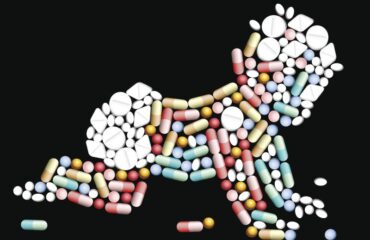Part Three – Non-Monetary Resources – Your Community in Action
As you develop your sustainability plan, it can be easy to overlook those resources that may not have a financial cost for your court. For example, do you have someone in your program that cannot read? Is there a school/university nearby that has a literacy program for the community? Would they be willing to support your effort in helping a participant to read? What about a retired teacher who may donate her or his time? And before you say, “They won’t do it without charging a fee,” have you asked? That is one of the quickest ways to defeat any effort for growth – assume that you know the answer before asking. I know of one program that was able to have the local pharmacy give daily medication to the participants to ensure that there was no diversion. How much did it cost? There was no financial cost; the only cost was a thank you letter from the judge. The pharmacy did it because the pharmacist was asked and he was given recognition for his support.
When looking at non-monetary resources, a vital step is to identify the potential resources in your community. In identifying your resources, one possible option is to create a type of visual map that lists your various needs and, under that need, who or what agency is responsible for it. Then do an inventory of what other resources might contribute to the program and that particular need.

A possible list of useful resources–in no particular order–could include:
- Social Services
- Faith Community
- Transportation
- Literacy Programs
- Community Foundations
- Employment/Vocational Services
- Mentoring Programs
- Libraries
- Local Bar (Attorneys) Associations
- The Arts
- Service Organizations
- Recreational Facilities
- Housing
- Schools / Colleges / Universities
- Business Community
Under each of these categories, who or what is your contact person or agency? Remember that your Treatment Court is made up of a team. No one person on your team will know everyone involved with your community resources, but when the entire team is involved in the process, your knowledge base will increase exponentially. A Treatment Court is always a team effort!
While you want to have one person overseeing the sustainability plan, such as the Court Coordinator, it is important to recognize that the person responsible for the plan may not be the same person assigned for the outreach. The prosecutor may know one organization better than others on the team. The defense attorney or law enforcement officer may be a better option depending on what the resource is. For each outreach, identify the best possible person who can make the introduction and start the process.

Have you Asked?
To create a visual diagram of what is needed and who could provide the resource(s), one particular program put their chart up on the wall in the Court Coordinator’s office. As a result of that visible chart, a member of the public happened to be in the coordinator’s office, looking at it and he asked about the chart. After being told about the purpose of it, he told the coordinator that he could help with a particular item that had no names under it. The coordinator was quick to put that person’s name on the map.
Other times it may take several creative steps to achieve a goal. Possibly someone from your faith-based community has a chauffeur’s license to drive your participants to their meetings, but that person doesn’t have an appropriate vehicle. So, maybe you can obtain a vehicle from a different resource, then get it serviced through the tech services at the local school, and then… taking it step by step can make so many things achievable. At times what is required is to think outside of the box and be creative, using multiple community services to achieve a goal, instead of trying for everything in one place or at one time.
Are your participants going for job interviews, but may not have the skills needed for the interview, or something as “simple” as makeup or a haircut? Is there a cosmetology school in your community that would help you out? If so, have you asked? Is there a social services department that helps with building job interview skills? Does one of your participants need transportation? One program had the sheriff’s department donate bicycles to the Treatment Court with a local bicycle business donating helmets that were given to participants who qualified. It was an opportunity to get the person transportation, and at the same time get some exercise.
In Part Two of this series, I discussed creating a website for promoting your program. Is there a computer class in your local high school or college? Is that something the instructor would support for the class? Is one of your graduates computer savvy and willing to donate the time and effort? Again, I ask you, have you asked the school? Have you asked your graduate? Or, have you just accepted the status quo?

Donations Anyone?
Treatment Courts know that incentives are a vital part for its success. We also know that some of the most important incentives are non-monetary such as applause or the Judge saying: “Job well done.” But there are other incentives that can be useful, such as bus tokens, or other small rewards. Many businesses in the community would be willing to donate those kinds of items. Your local card shop may have cards they no longer want, such as congratulation cards or happy birthday cards. They may be willing to give them to your court. The bowling alley or movie theater may donate some free games or movies tickets to a participant who has remained drug free for a month. Do you know if they will? Have you asked? What about a photographer doing some “glamor” shots of your participants who graduate? Your participants have seen themselves at their worse; now maybe it is time they see themselves at their best.
Even some major business chains and large banks are expected to support their local communities where they do business. What could be a better support for the local community than a needed donation to the Treatment Court?
Do your participants need jobs? One program worked with the local businesses to “sponsor” the court focusing on local hotels and restaurants. They agreed to hire participants for new job openings—if they qualified of course. This gave the business the opportunity to return support to the community; they had an employee who they knew had to remain alcohol and other drug free; and, if there were problems such as not showing up for work, they could be reported to the court and the matter resolved. It was a win-win situation for the business and the court.
Remember that speaking with your community leaders, they may also have suggestions on ways to support your program. By promoting the program as discussed previously, they already understand the importance of it succeeding. Your local businessperson may know someone else that could provide support in another avenue that you haven’t even considered.

Fundraisers
Another way to raise some income for your Treatment Court is to hold a fundraiser(s). One judge I know is a bicyclist enthusiast. He decided to hold an annual 100-mile bicycle ride as a fundraiser, to raise awareness of his Treatment Court and encourage cycling. Called the All Rise Century Bike Ride, it was held during National Drug Court Month. Between registrations fees and other donations, it raised between $500 and $1,000 per year. Other programs have golf outings, or banquets, or…well, the list of options is fairly long. What is big in your community that you can tap into and encourage, or maybe consider something the participants and/or the team could enjoy supporting?
Judicial Ethics
One important matter is always to remember any ethical limitations a judge may have in asking for donations.
Some jurisdictions do not allow a judge to be involved in the process, and at times it can even include employees of the court, such as a court coordinator. Other jurisdictions may allow it since the donation is not going to the judge, but for the Treatment Court program. I know of one Treatment Court that had the judge and the prosecutor speak at a community group’s meeting. Then the judge would leave and the prosecutor might make the request. Since the judge was not doing the asking or involved in the donations, it was determined that it was permissible for that jurisdiction. Another option that some Treatment Courts in the United States have developed is a 501(c)(3) (Non-profit) Foundation for the benefit of the court. That foundation was responsible for obtaining any donations for the program in that local community. Some of these foundations hold annual dinners or other types of activities to raise funds.

The bottom line is this: it is a team effort and this issue must be discussed openly on what is allowed or not allowed. No one should ever suggest that the judge violate the ethical requirements and it is not up to the other team members to determine if it violates the judicial ethics. That will always be the judge’s decision. If there are questions by the judge, they could request a judicial ethics opinion from the body that oversees ethics questions to determine what is allowed or not allowed.
Acknowledging the Support
Just as it is important to acknowledge our participants’ successes, it is important to acknowledge your community’s support. Some programs have been able to implement recognition programs for community members and agencies that have helped support their Treatment Court from everything as simple as thank-you-letters up to and including an annual banquet where they were recognized for their support.

Dream Big and Act
It is time to remember that money is not the only resource for your effort in saving lives. When looking for non-monetary resources, or possible donations, it is time to imagine the impossible, to dream big and reach for the stars. Sit down and start brainstorming your options. Don’t shoot down any idea because your initial reaction is: “We can’t do that.” I would never have thought of a 100-mile bicycle ride as a fundraiser; to me that’s “crazy talk,” but it worked for that court.
As these ideas are mentioned while brainstorming, write them down—even the crazy ones—and see what those thoughts lead to with further discussion. Make sure to involve the team in the entire process so you create some energy for your plan. Once you have your concepts, develop the steps and then ASK! It’s amazing what Treatment Courts can achieve when they set their collective mind to it.
Sustainability Series
In this series of articles on Treatment Court Sustainability, I discuss the importance of creating a long-term plan and some of the issues that can arise in ensuring your Treatment Court is sustainable. This series includes discussion on:
1. A Sustainability Plan (Part I),
2. Marketing your Treatment Court (Part II),
3. Non-Monetary Resources—Your Community in Action (Part III),
4. Show Me the Money (Part IV).
Get more articles like this
in your inbox
Subscribe to our mailing list and get the latest information and updates to your email inbox.
Thank you for subscribing.
Something went wrong.






